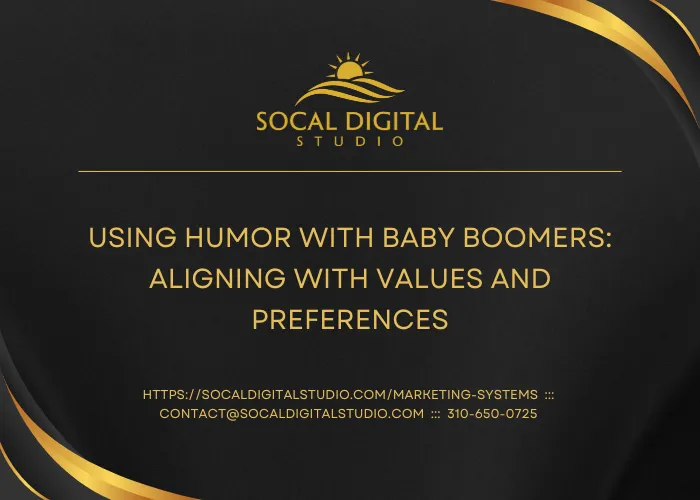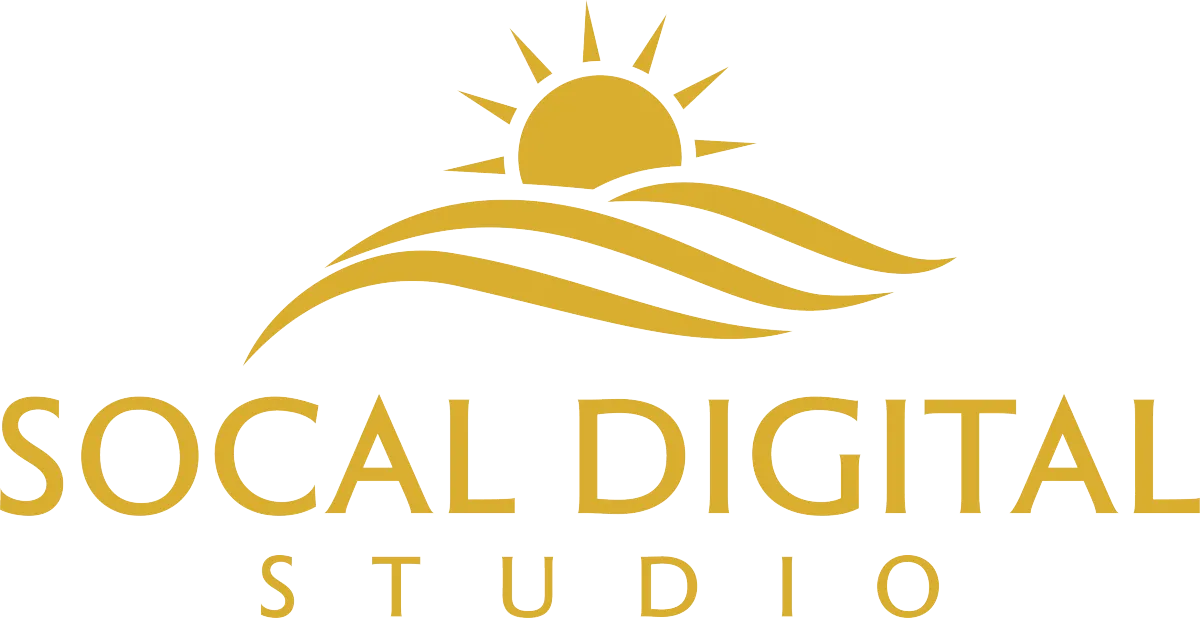PROPELLING SUCCESSFUL BUSINESSES
Actionable Best Practices

Using Humor with Baby Boomers: Aligning with Values and Preferences
"I love people who make me laugh. I honestly think it's the thing I like most, to laugh. It cures a multitude of ills. It's probably the most important thing in a person." - Audrey Hepburn
Introduction
Baby boomers, born between 1946 and 1964, grew up in a time of significant social change. They value hard work, loyalty, and family. Humor that resonates with them often reflects these values, is nostalgic, or is cleverly insightful without being crude or overly irreverent.

Strategies for Using Humor Effectively
Nostalgia: Baby boomers appreciate references to the past, which can evoke fond memories. Humor that taps into the cultural touchstones of their youth can be particularly effective.
Example: Coca-Cola’s “Hilltop” ad, which features the iconic 1971 song "I'd Like to Buy the World a Coke," was revisited in a Super Bowl ad. It resonated deeply with baby boomers by evoking a sense of nostalgia.
Relatable Situations: Humor that centers around everyday life, especially family dynamics and aging, can be very appealing.
Example: AARP’s ads often use humor to address common concerns about aging, such as technology adoption and staying active, in a lighthearted yet respectful manner.
Clever Wordplay: Baby boomers generally appreciate wit and cleverness over slapstick or crude humor.
Example: Insurance company Geico uses clever wordplay in many of their ads, appealing to the baby boomer’s sense of humor. The “Hump Day” camel commercial is a notable example, blending cleverness with a simple, funny premise.
Respect and Positivity: Humor should be respectful and positive, avoiding anything that could be construed as mocking or derogatory.
Example: Dove’s “Real Beauty” campaign celebrates natural beauty with a gentle, humorous touch, promoting positive body image in a way that resonates well with baby boomers.
When Humor Alienates Baby Boomers
Conversely, humor can alienate baby boomers if it fails to respect their values and experiences. Here are some common pitfalls:
Overly Irreverent or Crude Humor: Baby boomers tend to prefer humor that is clever and clean. Jokes that are too irreverent or crude can be off-putting.
Example: Ads that use toilet humor or excessive innuendo, like some of the earlier campaigns from Poo-Pourri, might alienate baby boomers who prefer a more refined sense of humor.
Disrespect for Aging: Humor that makes fun of the challenges of aging can come across as insensitive.
Example: An ad that trivializes the difficulties of learning new technology or makes fun of memory loss could be seen as disrespectful, leading to a negative response from baby boomers.
Ignoring Core Values: Humor that undermines core values such as family, hard work, or loyalty can alienate this demographic.
Example: A marketing campaign that mocks traditional family structures or portrays older people as out of touch with modern values could be perceived as offensive.
Excessive Use of Modern Slang: Humor that relies heavily on modern slang or internet memes may not resonate with baby boomers, who might feel excluded or confused by the references.
Example: A tech company using humor that revolves around TikTok trends or jargon might not connect with baby boomers, who may find it difficult to relate.
Conclusion
Humor can be a powerful tool in marketing to baby boomers if it is used thoughtfully. Brands that tap into nostalgia, use relatable and clever humor, and maintain a positive, respectful tone are more likely to succeed. On the other hand, humor that is crude, disrespectful, or overly reliant on modern slang can alienate this demographic. By understanding and aligning with the values and preferences of baby boomers, brands can create humorous content that resonates and strengthens their connection with this influential audience.
Disclaimer and Caution on General Characterizations and Generational Profiles
While general characterizations and generational profiles can offer valuable insights into common trends and behaviors within specific groups, it is important to approach these profiles with caution.
Usefulness
Generalizations can help in understanding broad patterns and tendencies, facilitating the development of targeted marketing strategies, communication methods, and policy-making.
Generational profiles, such as those of Baby Boomers, Gen X, Millennials, and Gen Z, can provide useful frameworks for understanding different perspectives, values, and preferences that may influence behavior and decision-making.
Pitfalls
Overgeneralization: Not all individuals within a group or generation will fit the characterized mold. There is significant diversity within any demographic, and individual differences can be substantial.
Stereotyping: Relying too heavily on generalizations can lead to stereotyping, which can perpetuate misconceptions and biases, resulting in unfair treatment or exclusion of individuals who do not conform to the stereotype.
Context Ignorance: General characterizations may overlook important contextual factors such as cultural, socio-economic, and geographical differences that influence behavior and attitudes.
Inaccuracy: Profiles can be based on outdated or incomplete data, leading to inaccuracies that misinform decisions and strategies.
In Sum
While general characterizations and generational profiles are useful tools for gaining a broad understanding of different groups, they should be used judiciously. Always complement these insights with specific, contextual information and remain vigilant against the risks of overgeneralization and stereotyping. A nuanced approach that respects individual diversity and avoids assumptions will yield more effective and respectful outcomes.
We Help You Effectively Use Humor to Align with Your Brand
Schedule a free impact and strategic session with us by CLICKING HERE and uncover opportunities to increase your website's traffic and engage with your target audience more meaningfully with tempered use of humor and storytelling so they will want to do business with you.
Recommended Reading: "The Content Beast" by Geoffrey Klein.

SUBSCRIBE TO THIS NEWSLETTER TO STAY IN THE KNOW
Please contact us with topics you would like us to cover
Dominate with Our Affordable All-in-One Marketing System
SoCal Digital Studio's Advanced All-In-One Marketing System is built to help local businesses attract, engage, convert, and retain customers with speed and consistency. It automates the communication that is essential to a business' success and continuing growth. Request a free marketing audit to uncover weaknesses and use SoCal Digital Studio's Marketing System to not only compete, but dominate the market.
All-in-One Marketing System
Leverage Powerful Marketing Tools and Sales Funnels to Nurture and Convert Customers at an Affordable Price
Our marketing system has it all and allows you to (1) capture leads via landing pages, forms, calendars, and inbound phone calls; (2) message leads via phone calls, SMS, emails, and Messenger; and (3) close leads with built-in tools for payments and analytics (including call tracking).You can also create landing pages and funnels, set up automated follow-up campaigns, schedule appointments, fine-tune marketing and sales processes, and manage all of it so nothing slips between the cracks in your dedicated marketing system.
Stellar Package
Monthly Subscription
12-Month Subscription is $4970
One-Time Set-Up Fee Varies
$297
Full System Access
5,000 Contacts
1,500 SMS or Calls
15,000 Emails
1-3 Team Members
Galactic Package
Monthly Subscription
12-Month Subscription is $6970
One-Time Set-Up Fee Varies
$497
Full System Access
7,500 Contacts
3,000 SMS or Calls
30,000 Emails
4-10 Team Members
Cosmic Package
Monthly Subscription
12-Month Subscription Is $9970
One-Time Set-Up Fee Varies
$697
Full System Access
10,000 Contacts
4,500 SMS or Calls
45,000 Emails
11-15 Team Members
